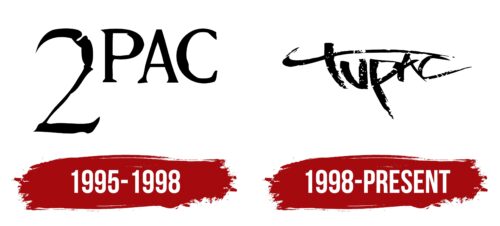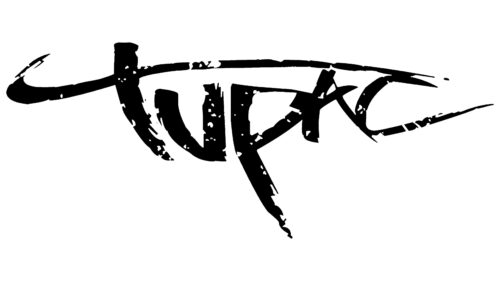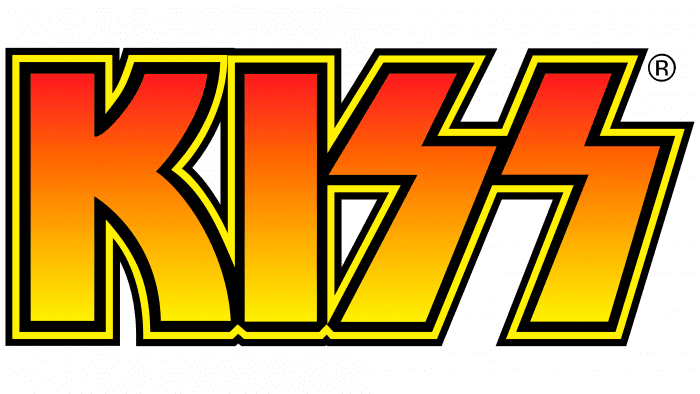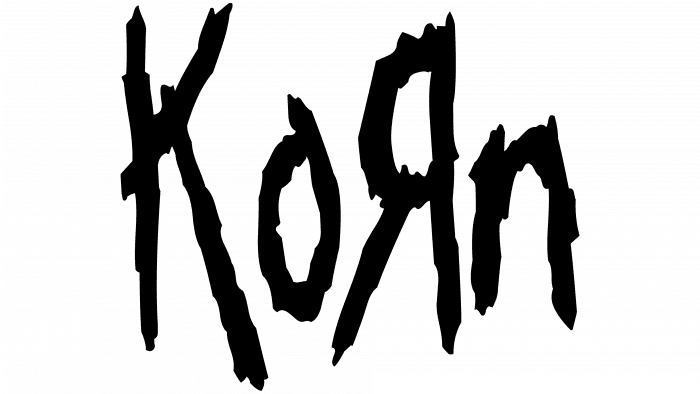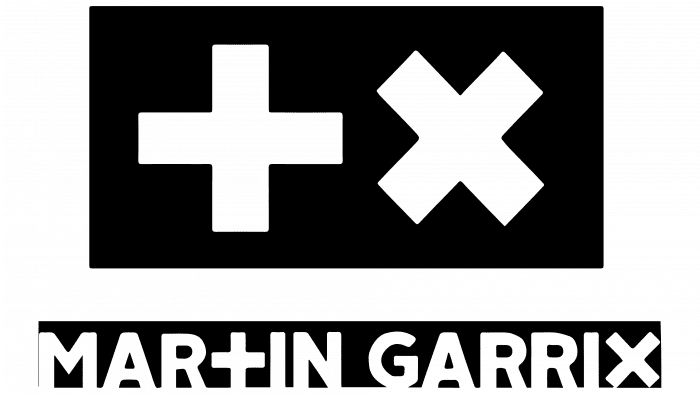2Pac’s logo is nostalgic and casual. The emblem brings back memories of an untimely departed musician. The elements of the mark convey a confident and strong voice in support of African Americans, who continue to delight fans with new hits even through the veil of the spiritual world.
2pac: Brand overview
2Pac was a famous New York hip-hop singer and actor who died at the age of 25. His real name was Lesan Parish Crooks. He was a member of the Rolling Sixties gang (part of the Crips). He was shot and killed during an East Coast/West Coast hip-hop standoff. He released five albums, most notably Me Against The World, All Eyez on Me, and The Don Killuminati: The 7 Day Theory. Over the years, he has been a member of the bands Digital Underground and Thug Life. In 2023, he received a star on the Hollywood Walk of Fame.
Meaning and History
Both logos accurately reflect the spirit of Tupac Amaru Shakur, although they differ in writing style. There is a simplicity and rhythm to the images. The lettering is understandable even to illiterate people. Being a “street kid” and a gang member, the musician conveyed the essence of his creativity through the style of graffiti. In the first case, the technique of replacing part of the word with a number was used. The second logo appeared after the musician’s death and was chosen by his loved ones. In 1997, his mother, Afeni Shakur, opened the studio Amaru Entertainment, where four posthumous albums of the performer were released, each of which was marked with a unique symbol.
What is 2pac?
The vibrant hip-hop artist is considered one of the most influential figures in the genre. He sang about the brutality of the streets, violence, and racism. He was shot and killed at the age of 25. His last words, “Fuck you,” reflected his lifestyle and lyrics in the best possible way. His passing was no less spectacular: Tupac’s body was cremated, and his friends smoked some of his ashes with marijuana.
1995 – 1998
The first logo used was a stylized version of the singer’s name. It was officially appropriated and registered by the singer’s family at the insistence of his aunt a year after Lesan Parish was born. The name Tupac was chosen in honor of revolutionary Tupac Amaru II, who led a rebellion against the Spanish in Peru. The rapper’s relatives were members of the Black Panther organization, known for its revolutionary-radical followers and frequent advocacy of armed solutions to social injustice. Hence the choice of name.
Revolutionary, in turn, was named in honor of the last Inca chief, which means “shining snake” in Native American parlance. The word encapsulates a vibrant personality, and it suits the singer quite well. Each of his subsequent albums was more recognized than the previous ones and received platinum certifications.
The first part of the word has been replaced by the numeral 2, making it much easier to read. “Tu” only sounds like a numeral, but grammatically, two is spelled “two.” This approach subtly hints at the educational problems of the ghetto residents and the indifference of the authorities to the situation and education of African-American children.
The large size of the numeral 2 replaced the first capital letter of the name. The numeral seems to be frozen in the emblem as if predicting the singer’s death after two decades of life.
The artist’s emblem was used until 1997, before the release of the second posthumous album R U Still Down? (Remember Me), on which the artist’s mother worked (the first posthumous album was written by Tupac shortly before his death).
1998 – today
For the posthumous albums under the Amaru Entertainment label, the logo was changed to a softer and more romantic one. The lettering resembles brush strokes on a wall. The font lines are uneven and handwritten. The number 2 has been replaced with the full name. The vertical line of the letter “T” and the slope of the letters resemble a gust of wind. The logo embodies the idea of the singer’s memory and spiritual presence.
The white spaces in the lettering pattern are reminiscent of light reflections during performances. They also speak of the musician’s short life, during which he did not have time to say and do much, and now his memory is gradually fading away.
Font and Colors
Black is the main color in the emblems. It symbolizes the color of the skin of the musicians and African Americans whose lives are dedicated to the songs of 2pac. The shade speaks of the gloomy content of the compositions, sad, aggressive, and accusing.
The font of the inscription is unique. It is made in handwritten format, which emphasizes the originality and unconventionality of the singer.
2pac Logo Color Codes:
- Black: Hex: #000000; RGB: 0, 0, 0
- White: Hex: #FFFFFF; RGB: 255, 255, 255
FAQ
Why did Tupac become an icon?
Tupac Shakur, a native of Harlem, New York, is recognized for his groundbreaking rap compositions infused with political messages and his involvement in conflicts between his West Coast faction and rival labels on the East Coast.
What is Tupac’s famous phrase?
“A life lost is not the greatest tragedy. The real tragedy is the passion that fades while one is still breathing. Never give up.”
What did 2pac say about life?
The real misfortune in life is not to face death but to let the fire inside you go out while you’re alive. Always persevere.
How has Tupac impacted the world?
Tupac Shakur became a transformative figure in pop culture, laying the groundwork for future hip-hop artists, allowing them to communicate their truth unhindered. His influence extended to the marginalized as well, giving a voice to those who were largely overlooked by society.
Why was 2pac named Makaveli?
Two months after Tupac Shakur was fatally shot, his posthumous album was released under the pseudonym Makaveli. The name was inspired by Niccolo Machiavelli, an Italian statesman known for approving the manipulation and intimidation of opponents.
Why is 2pac the greatest rapper ever?
Tupac’s contribution to the rap scene was characterized by unfiltered emotional intensity and poetic overtones in his lyrical delivery. His calls for self-determination resonated deeply with listeners. His legacy is such that people around the world are still familiar with his work today.

